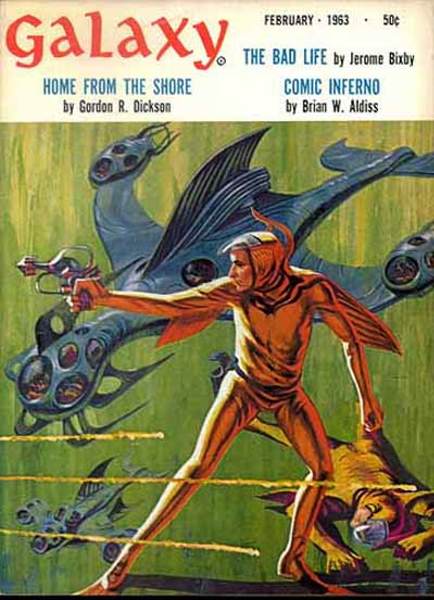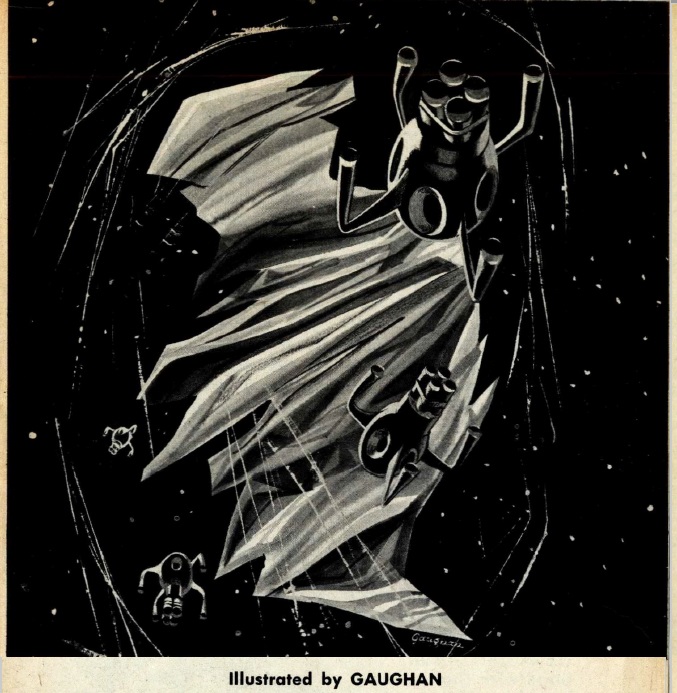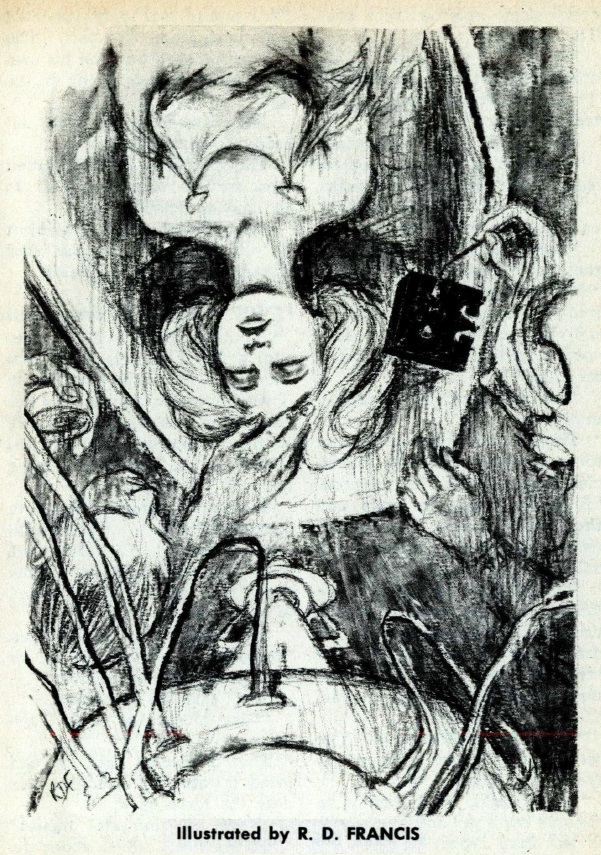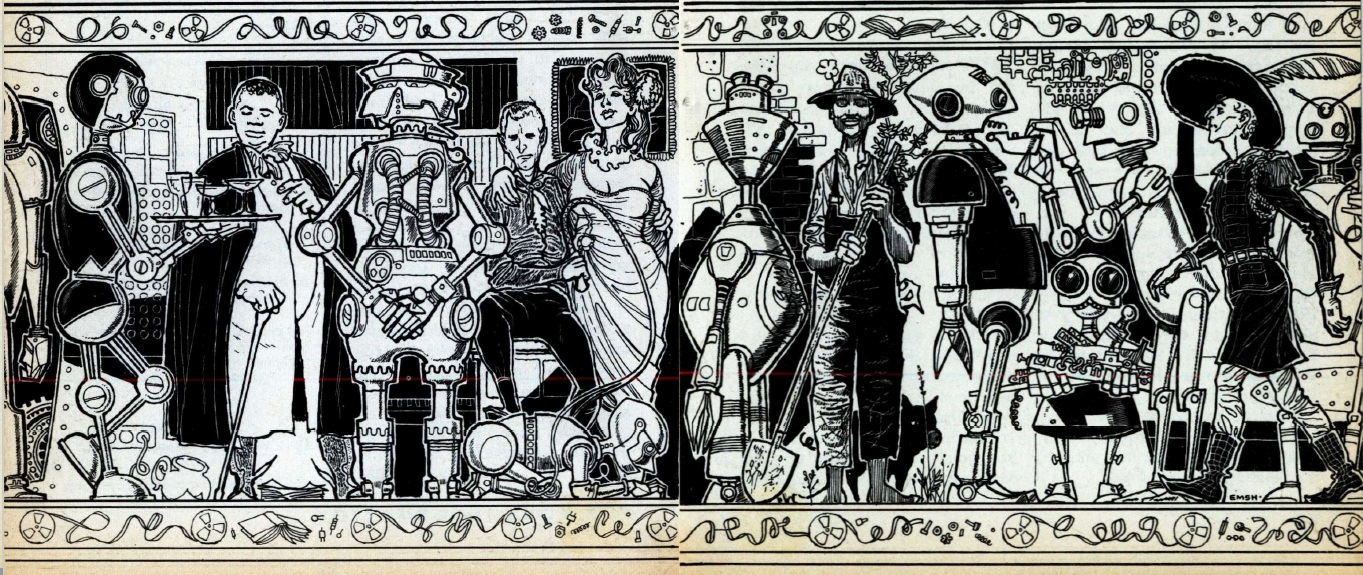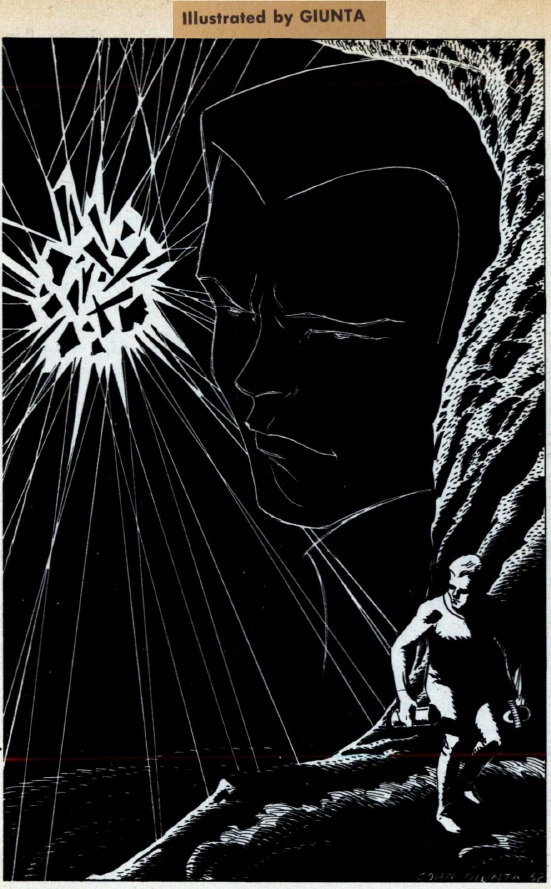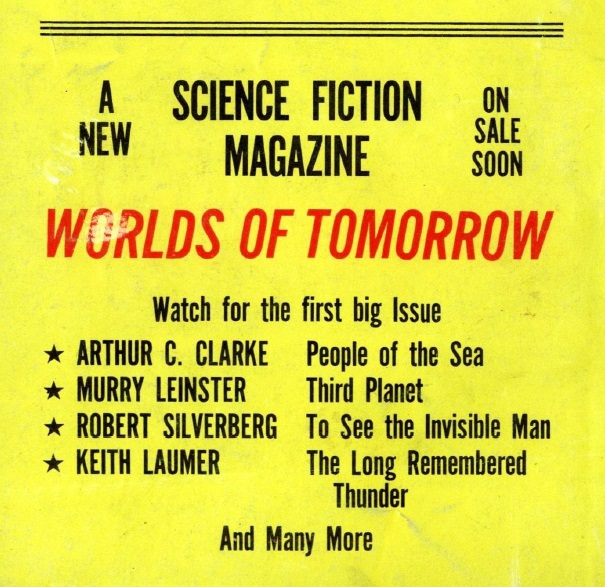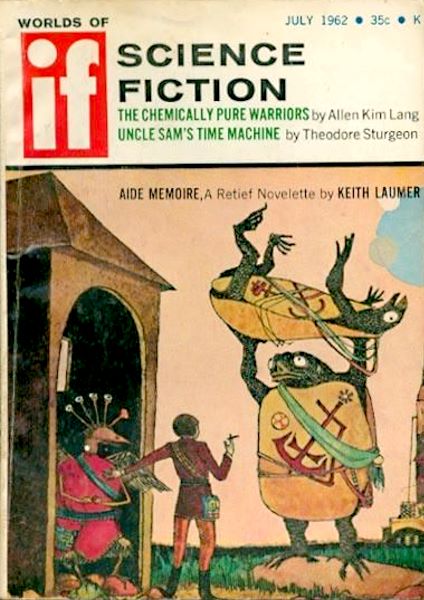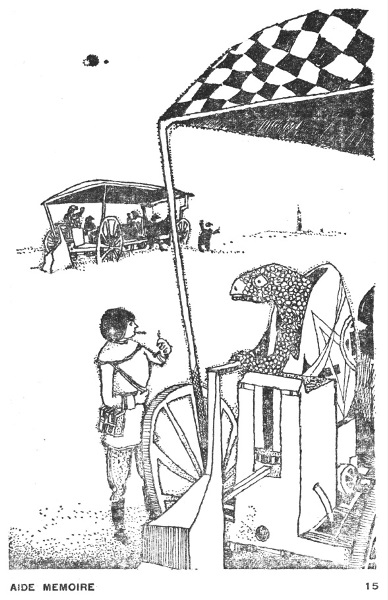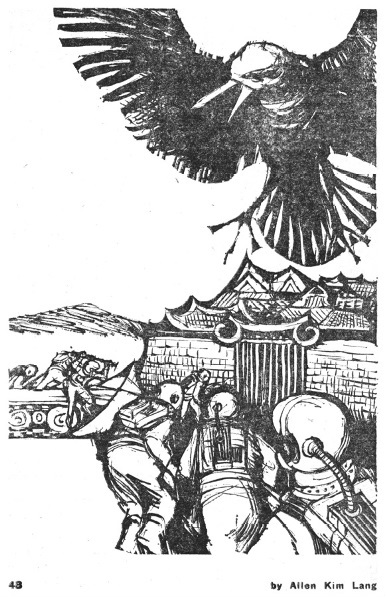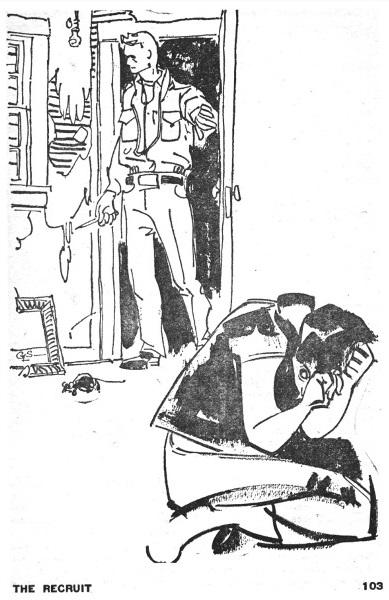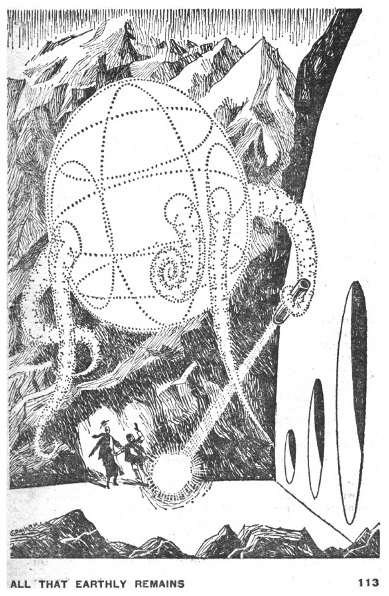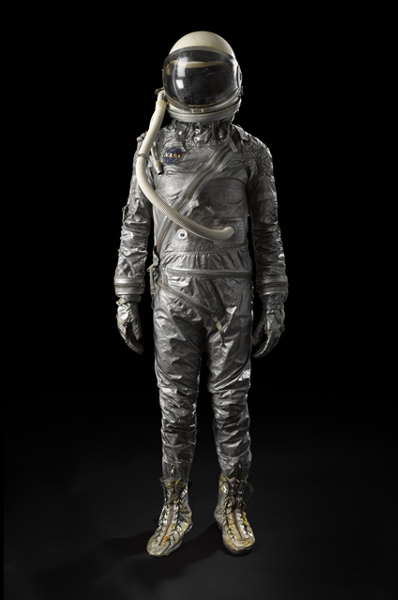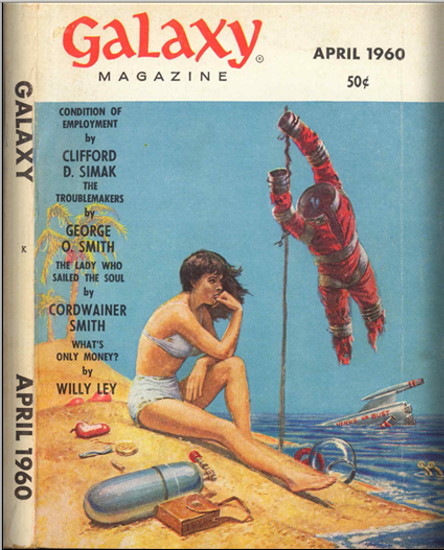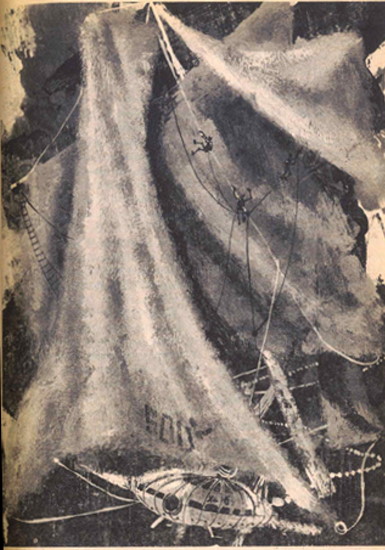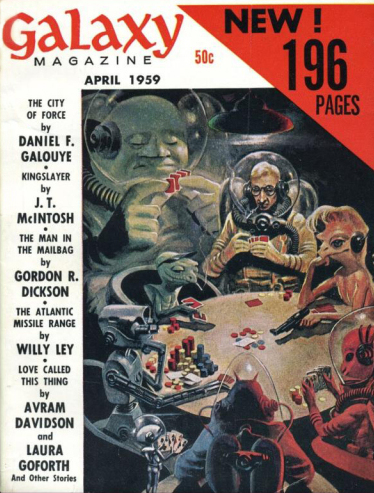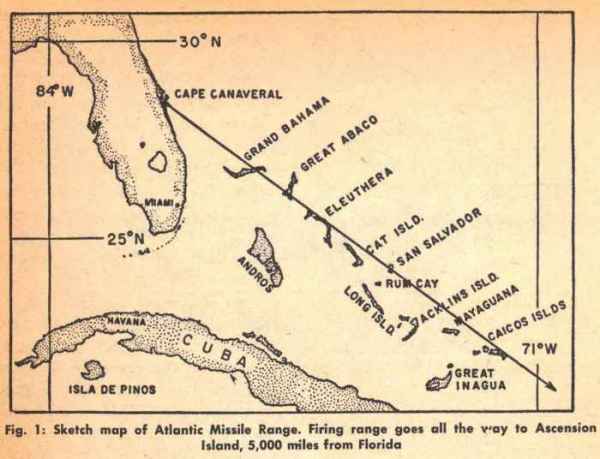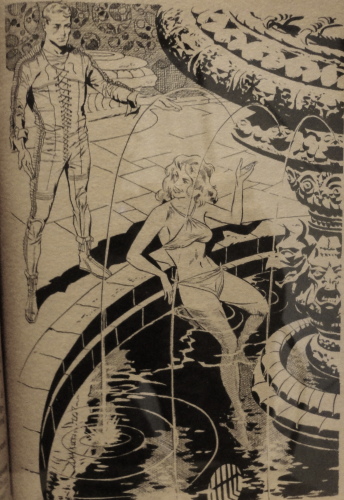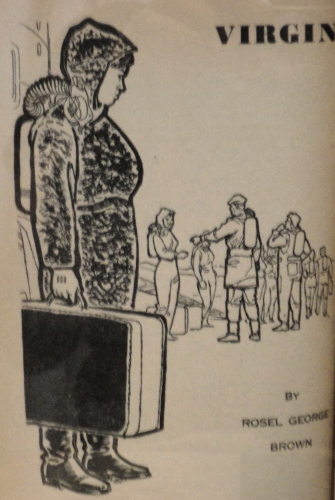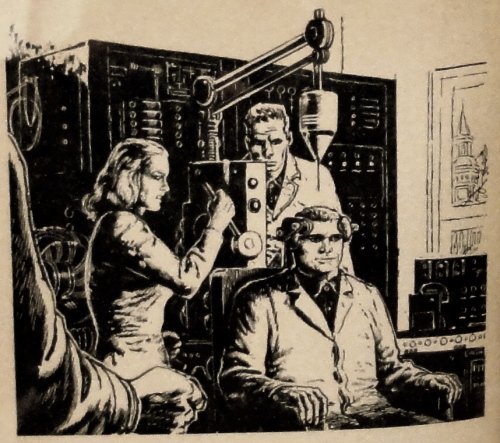[Did you meet the Traveler at WorldCon? Please drop him a line!]

by Victoria Silverwolf
I believe that time, even more than space, is the great theme of science fiction. Not only time travel, but also the ways in which the passage of time changes people and the way they live. Most SF stories take place in the future, and offer visions of the years, centuries, and millennia to come. Some feature precognition. Others deal with distortions in time, such as the slowing of time associated with velocities approaching the speed of light.
It's not surprising, then, that many of the stories in the latest issue of Worlds of Tomorrow feature characters struggling with the mysteries and challenges of time.

The Night of the Trolls, by Keith Laumer
The narrator of this novella is thrust out of his own time and into another. He is placed in suspended animation for a routine test, which is only supposed to last a few days. He awakens to discover that nearly a century has passed. The secret government installation where he works is in ruins. The compound is still guarded by a gigantic, heavily armed, automated tank called a Bolo. (Such a device first appeared in Combat Unit, from the November 1960 issue of The Magazine of Fantasy and Science Fiction. That story takes place many centuries after this one, so no knowledge of it is needed to appreciate the new tale.)

Getting past the mechanical guardian is the narrator's first task. Later he discovers that an apocalyptic event left most survivors barely able to stay alive. Feudal lords leading lives of luxury rule over them. The narrator infiltrates the fortress of one such dictator. He encounters a figure from his past, and becomes involved in a scheme to activate another Bolo.
This is a fast-paced, vividly written adventure story. The narrator is one of the author's super-competent heroes. His ability to fight and bluff his way into the lord's stronghold strains credibility. The antagonist is a two-dimensional character of pure villainy. However, these are minor quibbles. The action-filled plot always holds the reader's attention, and there are moments of powerful emotional impact. Four stars.
The Hermit of Mars, by Stephen Bartholomew
The protagonist of this story also journeys alone through the years, but by his own choice. An archeologist, he was part of an exploration team sent to the red planet. A minor heart problem made it risky for him to return to Earth when the mission ended. He gladly volunteered to remain behind, because unhappy relationships with women made him a misanthropic loner. Unmanned spaceships send him supplies. For thirty-five years he lives alone, studying the incredibly ancient artifacts left behind by the extinct Martians. Two men arrive after all this time. It soon becomes clear that they are up to no good. They tolerate the hermit as a harmless old fool, but he proves to have a trick up his sleeve.
There is nothing particularly noteworthy, for good or bad, about this story. The author's style is serviceable, but undistinguished. There are no surprises in the plot. The resolution is something of a deus ex machina. There's an enjoyable bit of irony at the very end. Three stars.
The Good Friends, by Cordwainer Smith
An astronaut returns to Earth after an emergency. While recovering in a hospital, he inquires about the other members of the crew. The doctor caring for him tells him the frightening truth. Like other stories in this issue, a long period of time is involved.
This is a brief story with the flavor of an episode of The Twilight Zone. It will disappoint fans of the author's beautiful and mysterious myths of the far future. The style is simple and direct, without the intricate wordplay and imaginative images found in tales of the Instrumentality of Mankind. It's not a bad story, but it pales into insignificance compared to masterpieces like Alpha Ralpha Boulevard and The Ballad of Lost C'Mell. Three stars.
Orphans of Science, by Stephen Barr
This is an informal article about small mysteries. Why does light reflecting off metal create small white highlights? What, exactly, is white light? Why does a mirror reverse things from left to right, but not top to bottom? (The magazine's editorial explains the author's confusion on this point.) The rest of the article discusses a few more minor puzzles. These trivial ponderings are mildly interesting. Two stars.
All We Marsmen (Part 2 of 3) , by Philip K. Dick

This section of the novel concentrates on three characters. At the heart of the story is a boy who is severely autistic, one who has never spoken. The wealthy and powerful head of the Martian water workers union believes the child is able to foresee the future. He plans to have a skilled handyman, who suffers from episodes of schizophrenia, build a device that will allow the boy to communicate. The theory behind this is that the child perceives time moving at a very fast rate. This allows him to look beyond the present, but also prevents him from talking. An important subplot involves the handyman's father, who has a scheme to make a large profit by buying seemingly worthless Martian land. The boy draws a picture that provides hints about the future of this project.
So far, the narrative style is realistic. This changes drastically when bizarre images of death and decay fill the page. These are associated with the nonsense word gubbish. If I understand the author's intent correctly, this neologism appears in the boy's mind to describe the inevitable disintegration of all material things with time. As if this were not disconcerting enough, a meeting between the handyman and the union leader is described multiple times before it actually occurs. These descriptions repeat certain words and events, but have important differences. Surreal images of a disturbing nature fill the repetitions. Whether these are hallucinations, symbolic visions of the future, or indications that the child is somehow able to manipulate time, the effect is frightening.
I suspect that some readers will give up on the novel at this point. Before this section, the multiple plotlines were complex, but comprehensible. The sudden change to inexplicable images and strange distortions of reality make the plot difficult to follow. It's impossible to predict where the author will take me next, but so far the journey has been fascinating, and I'm eager to find out what our destination will be. Four stars.
The Lonely, by Judith Merril

This story takes the form of a transcription of a message intercepted from space. An eel-like alien lectures other aliens about human beings. It seems that very few sentient species reproduce sexually. Of those that do, humanity is almost unique in having only two sexes. A statue of a woman holding a rocket, created by unicellular aliens after humans visited their world, is involved. Eventually humans return to that world and find the statue.
This is a very strange story. I credit the author for coming up with aliens that do not resemble people at all. Other than that, the story's intent is unclear. It seems to be saying something about art and symbolism, as well as the way in which men and women view each other. Two stars.
To Save Earth, by Edward W. Ludwig

Earth's sun is going to explode in a little over twelve years. Six astronauts spend six years journeying to a distant planet, looking for a place where humanity can survive. The length of the trip causes mental disturbances. One becomes an alcoholic, one a kleptomaniac, one an amnesiac, one a paranoiac, one a schizophrenic, and one feels compelled to break things. The latter destroys their communication equipment. Unable to contact Earth, they face the horrifying challenge of making the long journey back, just in time to begin the exodus of its population. The new planet is inhabited by friendly aliens, who invite them to stay. The aliens offer them delicious food and drink, beautiful alien women as lovers, and a life free from all care. They must decide whether to turn their backs on Earth or endure the voyage home.
In sharp contrast to the previous story, these aliens are just slightly different from people. The familiar plot device of telepathy allows them to speak to their human visitors. As you can see from the synopsis above, the story has many other implausible events. Two stars.
The Masked World, by Jack Williamson
Six survey ships are lost without a trace after visiting a distant planet. The captain of the seventh ship discovers the skeleton of his wife, the pilot of the sixth ship. Near her remains is a strange plant, unlike anything else on the planet. Its DNA structure turns out to be the key to solving the mystery.
This is a very short story with a unique concept. I had to wonder why anyone would keep sending survey ships to a place where they always disappear. Three stars.

I see by the old clock on the wall that our time is up for today. See you next time!


![[August 16, 1963] Time and Time Again (October 1963 <i>Worlds of Tomorrow</i>)](https://galacticjourney.org/wp-content/uploads/2018/12/630816WRLDSOCT1963-461x372.jpg)



